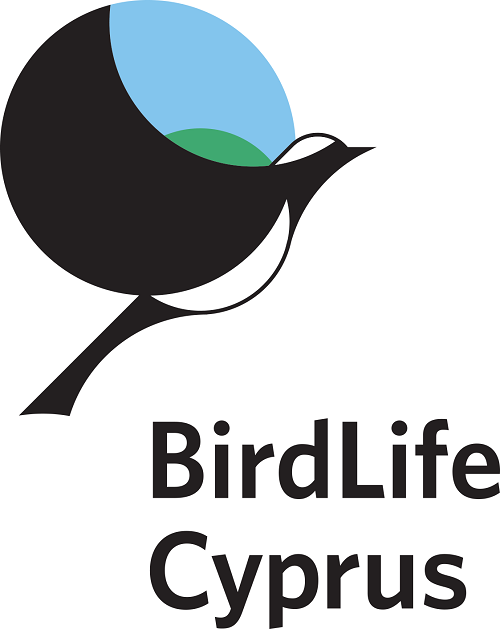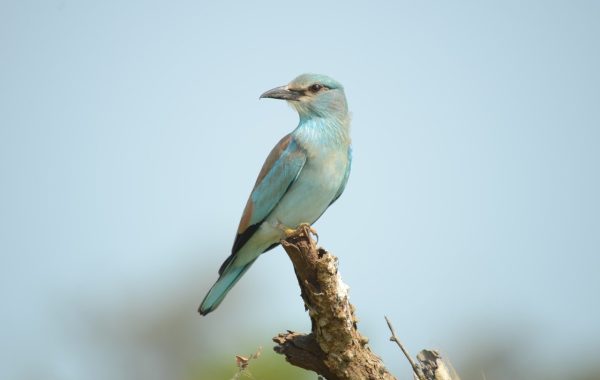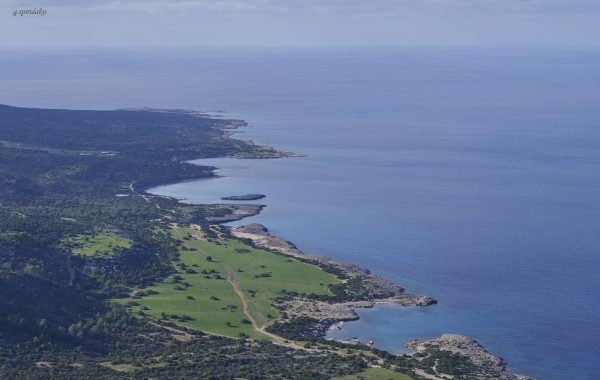While January might feel like the depths of winter for us, it is a season of remarkable activity for many bird species in Cyprus. The island’s unique Mediterranean climate creates opportunities for both resident and visiting birds, making these early months a fascinating time of transformation and preparation.
Griffon Vultures: Early breeders of the Mediterranean

One of Cyprus’s most iconic birds, the Griffon Vulture (Gyps fulvus), is among the first to begin the breeding cycle. As early as December, these majestic birds begin constructing their nests on towering cliffs, using sticks and other materials to build sturdy platforms that will cradle their precious egg. By January, breeding pairs are firmly settled in their nesting sites.
Over the next two months, both parents share the responsibility of incubating their single egg, which takes approximately 50-55 days to hatch. This timing is precise – chicks will emerge during late winter. While the breeding cycle described is typical for the species, tragically, Cyprus currently has no breeding pairs after the last ones were lost to poisoning. However, there is hope for the future as several younger birds are approaching breeding age, making the coming year potentially crucial for the species’ recovery on the island.
Winter visitors in their prime
January and February see Cyprus’s winter visitors at their most active. The island’s mild Mediterranean climate provides a perfect refuge for birds escaping harsh continental winters. The European Robin (Erithacus rubecula) can be found defending winter territories in gardens and woodlands, while Song Thrushes (Turdus philomelos) forage extensively in olive groves and carob trees.
These winter residents display fascinating survival strategies. During particularly cold nights, some species, including the Robin, can enter a state known as torpor – a form of temporary hibernation that helps them conserve energy. However, Cyprus’s relatively mild climate means this adaptation is rarely needed for extended periods.
Early signs of spring migration

By late January and throughout February, Cyprus witnesses the first hints of spring migration. The Barn Swallow (Hirundo rustica) is among the earliest arrivals, with the first individuals appearing in early February. Despite the winter chill, they read the seasonal cues – changes in day length and temperature patterns – that signal the time for migration.
The Great Spotted Cuckoo (Clamator glandarius) also arrives during January-February, timing its appearance to coincide with the breeding season of its host species, particularly the Eurasian Magpie (Pica pica).
Nature’s winter rhythms

Cyprus’s position as a Mediterranean haven during the winter months makes it vital for both resident and migratory species. The mild winters create a unique environment where northern European winter visitors overlap with early-arriving spring migrants, making these months a fascinating time for bird activity. From the soaring vultures on ancient cliffs to the smallest warblers in garden shrubs, each species plays its part in the vibrant tapestry of winter bird life on this Mediterranean island.
The constant flux in nature serves as a reminder of the intricate balance that governs life. While we might see winter as a time of rest, for Cyprus’s birds it is a season of activity and preparation, setting the stage for the year ahead.




